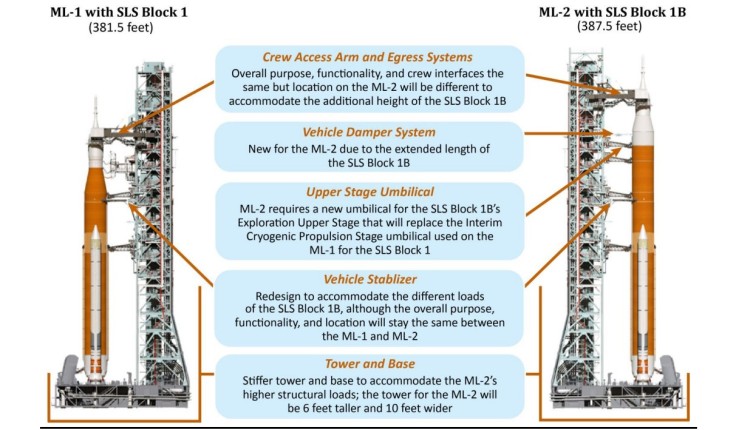NASA already has its own mobile launcher for its Space Launch System (SLS) rocket. However, the space agency intends to replace this $668.7 million launcher after only three missions.

Why Did NASA Want To Create Another Mobile Launcher?
The Artemis Program's first three flights, which will culminate in a human lunar lander no later than 2025, will use the SLS's first variant. On the other hand, starting with the Artemis IV mission, NASA plans to launch lunar missions on a more powerful, updated version of the SLS rocket, and this requires the new mobile launch tower, according to reports by The Washington Post and Ars Technica.
But there's a problem. The development of the second rocket launcher is not progressing as smoothly, according to a report by NASA's Inspector General Paul Martin.

NASA's Rocket Mobile Launcher Encountered Various Problems
As per Ars Technica, NASA awarded the engineering firm Bechtel a cost-plus contract three years ago for the design and construction of the mobile launch tower. The 118-meter tower will support the Artemis IV mission's fueling and liftoff, as stated previously.
The contract for the ML-2 mobile launcher was expected to cost $383 million. However, the report noted that the contractor made a slew of errors. The project, for example, is already years behind schedule, the launcher is too heavy, and the entire thing is hundreds of millions of dollars over budget. The project's new cost estimate is $960 million.
Furthermore, according to Martin, NASA handed the contract to Bechtel before finalizing the specs for the SLS rocket's upper stage.
NASA Plans To Continue With This Project
Despite this, NASA pushed for the building of a second mobile launch tower to be completed by 2026, and requested that design work on the tower be completed before the rocket's final needs were known. This will almost certainly result in increased expenses, increasing the price of the second mobile launch tower past $1 billion, Ars Technica reported.
The space agency claims that it had no choice but to proceed with the tower's design and construction in order to achieve a deadline for its lunar missions. This is because NASA plans to launch lunar missions on the more powerful, upgraded version of the SLS rocket beginning with the Artemis IV mission. This mission is scheduled to launch in 2026, however due to delays in earlier Artemis flights, it is more likely to launch in 2027 or 2028.
NASA Had To Shoulder Millions of Dollars of Project's Cost
The space agency had already committed $435.6 million to the project as of this April. Despite these generous funding grants, Martin says that design work for the massive launch tower was still unfinished as of May. In reality, Bechtel currently expects construction to begin no earlier than the end of calendar year 2022.
According to Ars Technica, Bechtel overestimated the project's breadth and complexity, according to the report. In turn, the contractor's officials began to blame the COVID-19 pandemic for some of the project's cost hikes.









